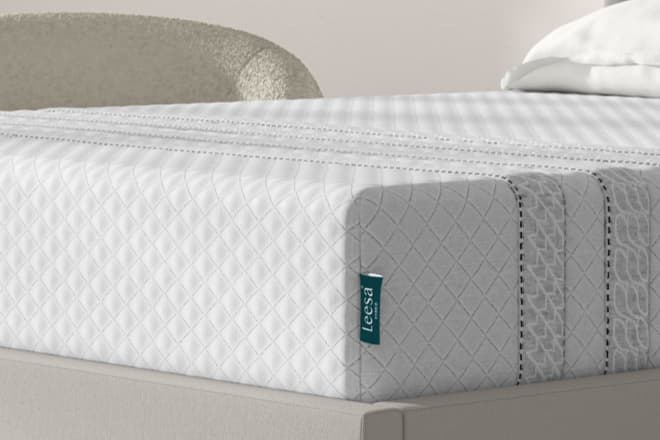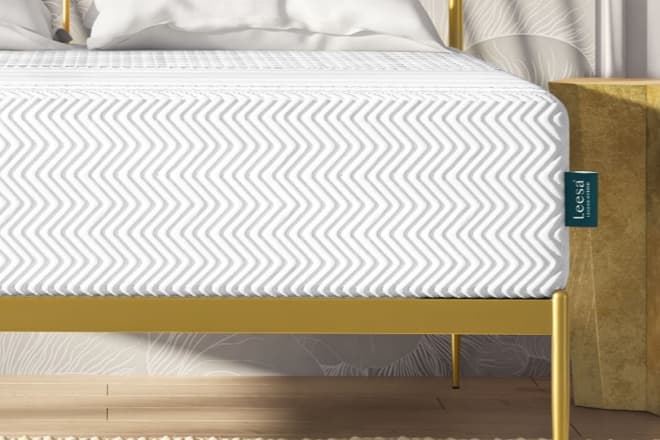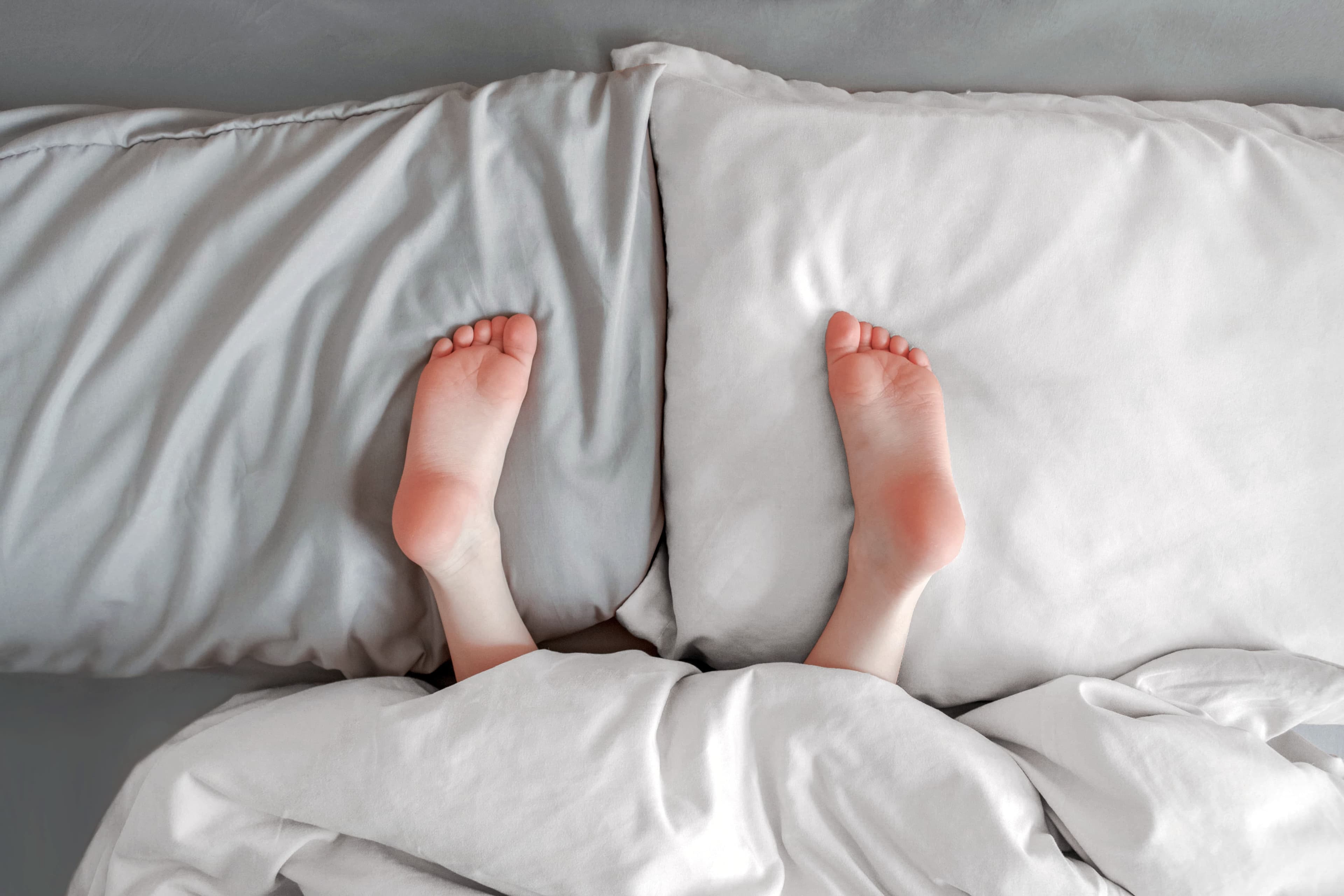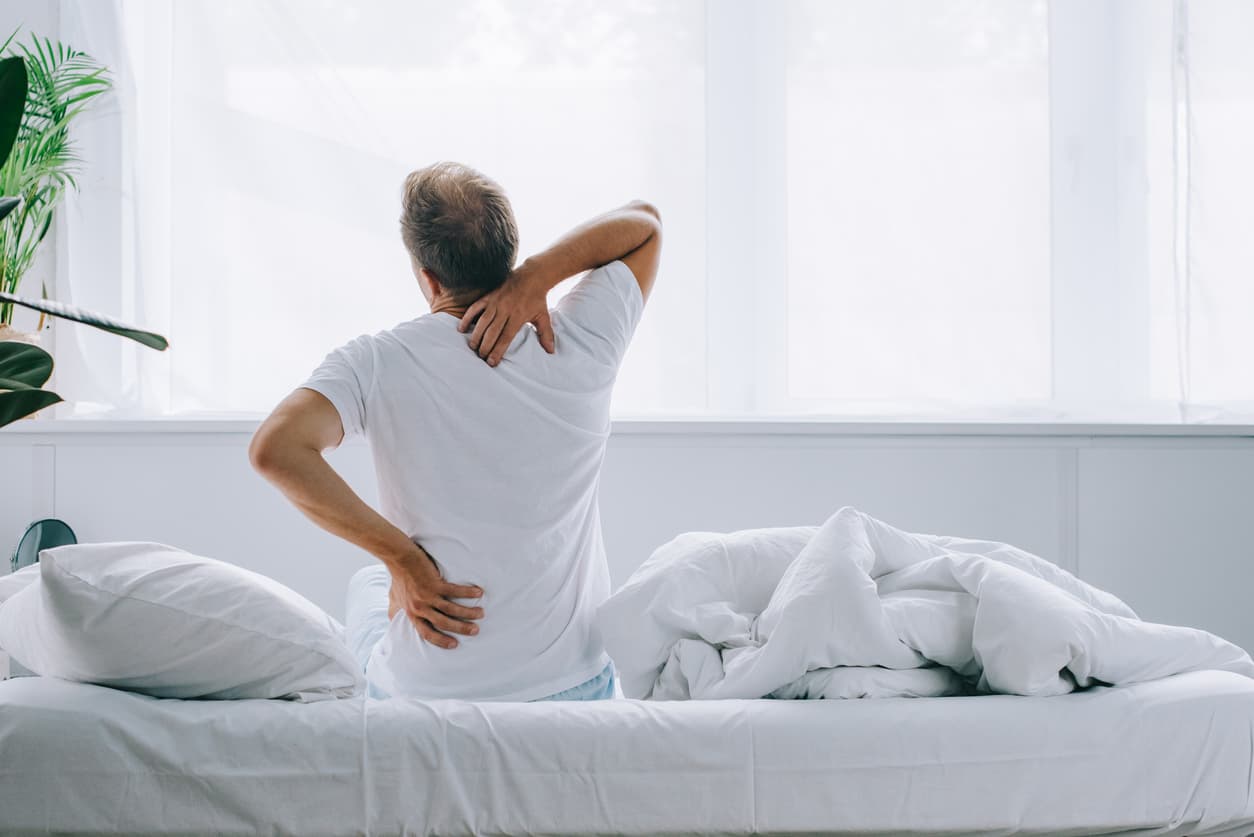Your mother did it. Your grandmother did it too. And chances are, you've been given the same tried and tested advice—regularly flip and rotate your mattress. But why are mattress rotation and flipping so important? And what’s the difference between the two?
What is The Difference Between Flipping and Rotating a Mattress?
Flipping a mattress means turning one side to the other so you will eventually sleep on both sides. Rotating your mattress means pivoting it 180 degrees, so the space where your head rests becomes the support for your feet and vice versa.
Most modern mattresses do not need to be flipped; however, double-sided mattresses should be. Occasionally, the firmness of the double-sided mattress varies from side to side, giving you the option to choose the desired firmness. However, you should always follow the manufacturer's instructions before rotating or flipping your mattress.

Mattress Flipping
Turning your mattress completely over to see its other side
Often required for innerspring mattresses
Two-sided newer innerspring mattresses can commonly be flipped every six to twelve months
Two-sided older innerspring mattresses usually require flipping two to five times a year
Mattress Rotation
Spinning your mattress clockwise 180 degrees
Only one-sided mattresses, especially memory foam mattresses, latex, hybrid, and pillow top mattresses should be rotated. Flipping these mattresses can cause discomfort and may cause irreversible damage
Generally, memory foam and latex mattresses can be rotated every six to twelve months
Hybrid mattresses are normally rotated every three to six months
How Often Should You Flip or Rotate Your Mattress?
Depending on your mattress manufacturer, you may have specific instructions on how to flip the mattress. In fact, many modern innerspring mattresses are designed to be used on one side only, so flipping may not be necessary or even possible. But for traditional innerspring mattresses, it is recommended to flip them every three to six months to promote even wear and prolong their lifespan.
The frequency at which you should rotate your mattress depends on its material. Some mattresses need to be rotated every few months, while others only need to be rotated yearly. There are even mattresses that do not require rotation due to technologies integrated within them. However, as a general rule, the rotation should be performed once every six to twelve months to achieve even wear and tear.
Why Should I Flip My Mattress?
There are different reasons why you may be advised to flip your mattress, depending on the type of mattress you have. Traditional innerspring mattresses are designed with a system of coils or springs that provide support and cushioning, and over time, these coils can become compressed or worn out in certain areas. Flipping your mattress can help distribute your body weight more evenly across the coils, which can:
Prevent Uneven Wear and Tear
Flipping your mattress helps to distribute weight evenly throughout the entire mattress rather than only on one side. As a result, the coils will wear out evenly throughout the mattress, and the bed will last longer.
Reduce Dust & Bacteria Build-Up
As we sleep on our mattresses, dust, moisture, and debris accumulate, causing dust mites to multiply and allergies to develop. You can reduce dust and bacteria from collecting on each side of your mattress by flipping it.
Improve Mattress Lifespan
A mattress will wear out and begin to sag more quickly on the side that is frequently used. When you flip the mattress, you give one side time to even out and recover while the other side takes a turn supporting your body.
Why Rotate My Mattress?
Over time, body weight and pressure can cause certain areas of the mattress to become compressed and saggy, which can affect the overall support and comfort of the mattress. By rotating the mattress, you are changing the location of the heaviest part of your body, which can help:
Promote Better Mattress Support
Rotating your mattress helps evenly distribute wear and tear, particularly on areas such as our hips and shoulders that receive the most pressure during the night.
Prevent Mattress Sagging
The regular rotation of your mattress improves its capacity to withstand stress over time so that pressure points are spread out, and premature sagging will be minimized.
Improve Personal Hygiene
Mattresses are prone to accumulating sweat, dander, dust mites, and mold in humid environments over time. For those who have allergies, this can be especially harmful. By switching positions while you sleep, you fluff up the mattress and prevent your body from being exposed to the same spots for an extended period of time.
What Mattress Types Should Not Be Flipped?
Most modern mattresses do not need to be flipped, especially with multiple layers that serve specific functions.
Memory foam mattress
One-sided mattress
Latex mattress
Before deciding whether it's time to flip your mattress, check with your manufacturer's specifications regarding flipping. Leesa mattresses require no flipping at all; just set yours up on your bed frame, and it's good to go for years to come.
What Mattress Types Should Not Be Rotated?
Every mattress type can benefit from regular rotation. Unless your mattress has integrity issues like tears or holes that threaten it from falling apart, you should feel comfortable rotating it. However, some particular mattresses have specialized functionality support for the head area, and so should not be rotated. To be sure, ask your mattress manufacturer for specific instructions if you intend to regularly rotate your mattress.
The Right Bed Base Makes a Difference with Leesa
On top of rotating your Leesa mattresses a few times every year, having a suitable bed base can significantly extend the life of your mattress. A good bed base prevents your mattress from sagging and helps distribute the pressure of your mattress more evenly (so that it wears more evenly, too). So, what kind of bed base is best for your foam or hybrid mattress?
There are so many options for a bed base that it can be hard to choose the best one to partner with your new mattress. Your Leesa mattress needs a firm, sturdy base to not only give you the best rest but to ensure your mattress lasts a long time. Here are a few options that we recommend for your foam or hybrid mattress:
Pro tip: You would want to opt for a solid bed foundation, not a box spring. A box spring will not give your mattress the support it needs. It's not built to be sturdy enough, and over time, your mattress will sag through the gaps in a box spring, ruining it.
If you're ready to get better rest, Leesa has your back. We've got great mattresses, pillows, bases, and a complete range of sleep accessories for the best sleep experience.
Visit us today to experience the best sleep. The right bed makes the difference. The right mattress is a Leesa.

FAQs
Should All Mattresses Be Flipped?
Nope! It is not recommended to flip a memory foam or pillow-top mattress; only double-sided mattresses can be flipped. If you flip a mattress designed for rotation, you could damage the cushion, making it wear out faster, and have an uncomfortable night's sleep. You should speak with your mattress company to find out what is best for your particular mattress.
Do I Need to Rotate My Box Spring?
It is not necessary to rotate a box spring like you would rotate a mattress. Box springs are designed to be used in a specific orientation and are not meant to be flipped or rotated.
However, it is still a good idea to periodically check your box spring for any signs of wear and tear, such as broken or bent slats or worn-out fabric. If you notice any issues, it may be time to replace your box spring to ensure that it continues to provide adequate support for your mattress.
How Often Should I Clean My Mattress?
It is recommended to clean your mattress at least twice a year to keep it free of dust, dirt, and allergens. To clean your mattress, you can vacuum it, spot-clean any stains with a mild detergent, and deodorize it with baking soda. For more detailed instructions, you can refer to this article on how to clean a mattress from Leesa.
Additionally, using a mattress protector can help keep your mattress clean and free from spills, stains, and allergens. It is especially important to use a mattress protector if you have a memory foam mattress, as they can be more susceptible to damage from spills and moisture.
Can a Sagging Mattress Cause Back Pain?
It's true! If your back pain is at its height after waking up, it may be time to examine your mattress to see if it is sagging. Most mattresses begin to sag under the lower back, disrupting your spine's delicate alignment and requiring your muscles to work overtime to support your body.
Should I Rotate my Leesa Mattress?
Definitely! We believe you should rotate your mattress periodically to ensure even wear across both foam and hybrid mattresses. This is especially important if you sleep with a partner or have pets. However, it is also beneficial to rotate your mattress even if you usually sleep alone and prefer sleeping on one side over another. We recommend rotating your Leesa mattress every three to six months.
Should I Flip my Leesa Mattress?
No! You don't have to worry about flipping your Leesa mattress. Traditionally, mattress companies recommend flipping your innerspring mattress to get even wear on both sides (and both ends) of your mattress over time. They advise that you flip or rotate your traditional mattress at least four times a year. With Leesa, you don't have to stress about a mattress-flipping schedule because you don't have to flip your mattress, just set it up once, and you're good to go for the years to come.
Our mattresses are designed from the bottom up, with layers in a specific order, to help you get better rest. If you flipped your Leesa mattress, you would compromise its entire performance design. If your Leesa mattress is not positioned correctly, you won't receive the benefits of the multilayer foam design.
Are you worried about the life of your mattress? Don't be. We only use the highest quality materials and craftsmanship to ensure the Leesa mattresses outlive the lifespan of older innerspring mattresses without the need for flipping.
Just because you don't have to flip your Leesa mattress, it doesn't mean your mattress will have a shorter life span. Our beds are built to last and are guaranteed to be durable, so you can rest on your new mattress for years to come.



